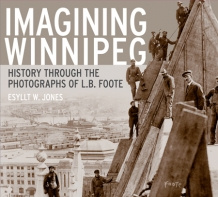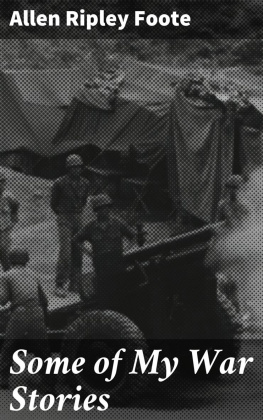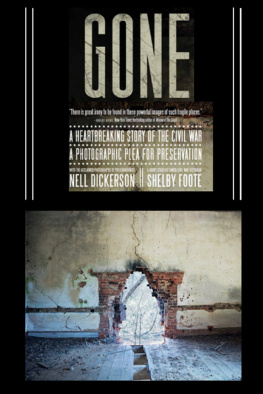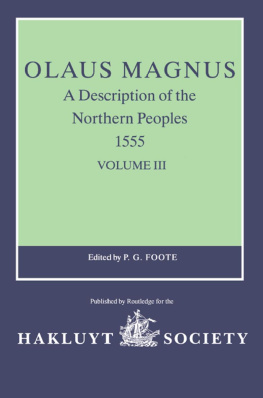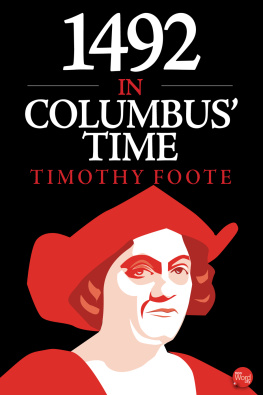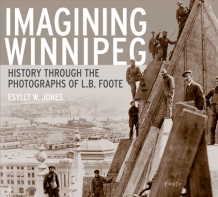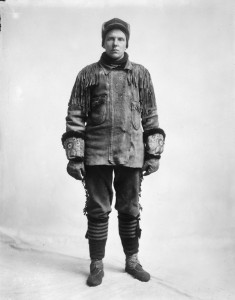About the Print Edition
Imagining Winnipeg: History through the Photographs of L.B. Foote
by Esyllt W. Jones
Published by University of Manitoba Press
September 2012, 166 pages
Paper, ISBN: 978-0-88755-735-4, 10.5 9.5, $39.95
Order your copy here
Incorporating 150 stunning photographs from the more than 2,000 images in the Archives of Manitoba Foote Collection, Imagining Winnipeg challenges our understanding of visual history and the city we thought we knew.
Visit the Lost Foote Photos Blog at lostfootephotos.blogspot.com for the amazing back story of how some of these photos were recovered, as well as guest posts from artists, filmmakers, photographers, and more about their favourite Foote photos and the inspiration they have invoked!
Copyright 2012 Esyllt W. Jones
University of Manitoba Press
Winnipeg, Manitoba
Canada R3T 2M5
uofmpress.ca
ISBN 978-0-88755-441-4 (epub)
A version of this essay serves as the introduction to the photography collection of the same title, Imagining Winnipeg: History through the Photographs of L.B. Foote (Winnipeg: University of Manitoba Press, 2012).
Imagining Winnipeg
History through the Photographs of L.B. Foote
by Esyllt W. Jones
In an expanding and socially fractious early twentieth-century Winnipeg, Lewis Benjamin Foote (1873-1957) rose to become the citys pre-eminent commercial photographer. Documenting everything from royal visits to deep poverty, from the building of the landmark Fort Garry Hotel to the turmoil of the 1919 General Strike, Footes photographs have come to be iconic representations of early Winnipeg life. They have been used to illustrate everything from academic histories to posters for rock concerts; they have influenced the work of visual artists, writers, and musicians; and they have represented Winnipeg to the world.
In this essay, historian Esyllt W. Jones takes us beyond the iconic to reveal the complex artist behind the lens and the conflicting ways in which his photographs have been used to give credence to diverse and sometimes irreconcilable views of Winnipegs past.
Thordur G. Thordarson in winter clothing, 1915.
Archives of Manitoba, N2401.
Sometimes an archive is a puzzle. So it is with the Lewis Benjamin (L.B.) Foote collection at the Archives of Manitoba, which includes over 2,000 photographs taken between 1905 and 1950 and a small and quirky collection of textual archival documents, bits and fragments of Footes life. Were it not for the allure of his images, and the fact that certain of Footes photographs have come to be iconic representations of early twentieth century Winnipeg life, the limits of what he tells us about himself and his work in his written record might be less exigent. But for someone wishing to understand the talent capturing the likeness and character of Thordur G. Thordarson in winter clothing, or an unnamed Indian at a winter carnival, or the eloquent plea of striking Canadian National Railway carmen We Asked for Bread and Received a StoneFootes intentions are something of a mystery. Foote composed songs, plays, poems, and a partial memoir. When his wife died, he recorded his grief in poetry. But what he thought about Winnipeg is mostly evident to us in a large and diverse body of photographs, some of them ubiquitous illustrations of Winnipegs history, many of them unknown.
Footes photographs are a cultural product of consumer capitalism, for he earned his living by selling them. In an expanding, entrepreneurial, and socially fractious early twentieth century Winnipeg, Foote rose from among the competition to become a pre-eminent local commercial photographer, called upon to document everything from royal visits to the conditions of deep poverty in the north end of the city. Foote had no formal training as a photographer. He learned his trade by doing it. Lewis Benjamin Foote took a lot of photographs for those who could pay, from private individuals through government. As a commercial photographer whose priority was selling a product, Foote generated a corpus that can seem indiscriminate, without shape. This has puzzled commentators, for whom Foote is something of an enigma. As journalist and Manitoba historian Doug Smith has asked, was his astounding collection of photographs just coincidence? It is difficult to discern any particular voice speaking to us from his choice of subject. Indeed, he did not choose his subjects, or only rarely. And yet, Foote photographs have held the interest of audiences for over a century, shaping historical meaning through their circulation.
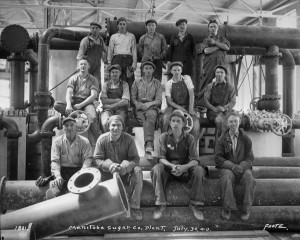
Workers at the Manitoba Sugar Company plant, 1940.
Archives of Manitoba, N2311.
In this generous archive of photographs many, it must be said, are mundane. But there are others that are somehow surprising and disconcerting. To give one example: for many years, Foote photographed murder and suicide scenes for the provincial coroner. Although it is unclear how many of these scenes he photographed in total, he kept some of the photos in his own personal collection, now housed at the provincial archives. Among them are a small group of photos taken from a suicide and double murder in 1929 in St. Laurent, the historically Mtis community eighty kilometres north of Winnipeg. It is winter, the ground is barren, and the body of Mrs. Alfred Richard, who had been murdered trying to stop the abduction of her teenaged daughter Emma, lay outside on the ground, among small farm buildings. Along with separate photos of the corpses of Mrs. Richards and Emma and their murderer, is a photograph of the Richards two other younger daughters. The girls are sitting side by side, gazing directly at the camera, holding their dogs on their laps. Outside of its context, the photo depicts two rather sad-seeming girls posing for a photographer. Given the context, and the tragedy then unfolding around them, the photo takes on some deeper meaning. But what is that meaning? Why did Lewis Foote take this photo? Is he simply callous? Does he wish to comfort the girls, distract them, make them feel special by having their picture taken? Does he wish to distract himself from the awfulness of the scene? This photograph represents for me the enigmatic nature of Footes work, the complex emotional appeal to the viewer, and the subtle empathy and beauty sometimes found in them.
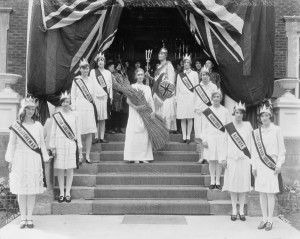
All Saints' Church garden party, 1927.
Archives of Manitoba, N2239.
Many of us have seen Foote photographs, whether or not we are aware of their provenance. For at least thirty years, since the creation of the Foote archive at the Archives of Manitoba in the early 1970s, these photographswhich are housed in a row of filing cabinets in the archives reading room, mostly fully accessible to the publichave been used to tell the story of Winnipegs past. They have been used to illustrate everything from academic histories to posters for rock concerts. They have also informed cultural production in Winnipeg, influential in the work of visual artists, writers, and musicians. And this familiarity is not only localFootes images have represented Winnipeg history to the nation, and have been included in national museum exhibits both real and virtual.

